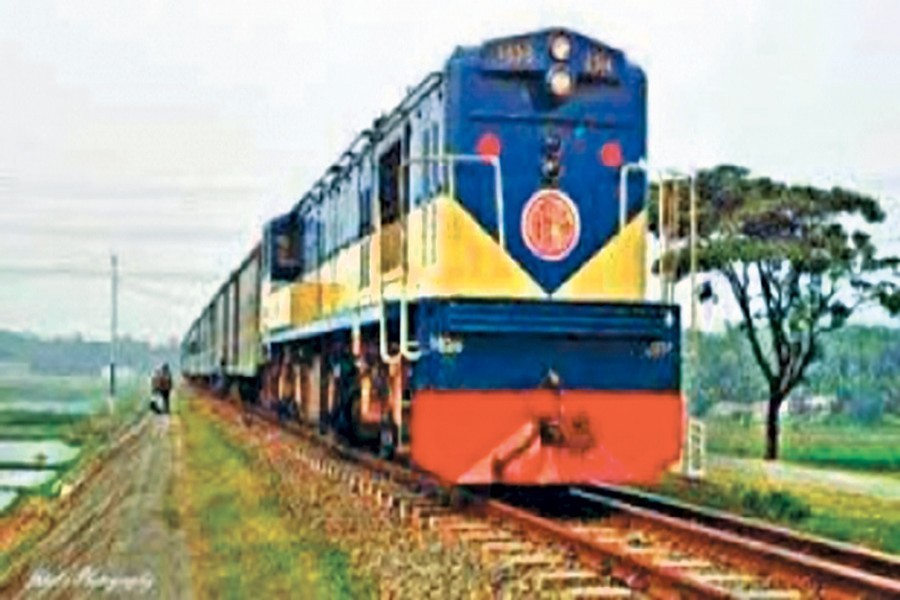The orgies of death on rail tracks, at level crossings to be precise, have lately become a part of the regular scenes in this country. Deaths in heart-rending accidents continue to make the air heavy, in a perverse competition of paling one another in horridness and gloom. There are few signs of remedial measures. After a few days of nationwide uproars organised by the travel safety groups punctuated by wails, newer accidents start biding time to get themselves added to the rising total of the deadly collisions at level crossings or on a worn-out pair of lines. In a week after the Mirsharailevel crossing tragedy, witnessing the deaths of 12 youths, several isolated accidents one after another stunned the sensitive segments of society. Doomsayers feel the procession of rail line-centred deaths and devastations is not going to stop anytime soon. Instead of collective efforts to reach a permanent solution to the national scourge, the crisis is allowed to get deeper. This development, in no way, is deliberate. The whole system related to putting brakes on these dreadful developments in the rail journeys has, in fact, emerged as something elusive. It's not going to stop soon. The sad aspect is few have the time to give serious thoughts to the problem. From passengers, the railway authorities, to the technical hands --- none of them bother to see an effectual end to these terrible impediments to the running of a massive sector like the railway.
When the railway tracks were being laid on the Darshana (Chuadanga)-Jagotee (Kushtia) segment in the late 1850s, few in the railway department had ever thought that they were in fact being thrust into a complicated and fraught era of engine-dominated communication. It was undeniable that the fast spreading railway network across East Bengal (now Bangladesh), starting operation in 1862, had brought scores of benefits to the regular mid- and long-distance passengers. The inter-district ship and launch travels had by then been in service. But the water transports could operate on the river routes only. Moreover, they emerged as slower in speed than the railway steam engines. The new-generation locomotives added more speed to the rail travels, thus revolutionising the railway service.
A grim aspect in railway travels, however, began unfolding with the fast increase in the length of the railway tracks. These developments accompanied spectacular rises in the number of passengers, as well as the volume of cargo. The aspect that began tarnishing the image of this mode of transport comprised the accidents while the trains were on the run. Probes discovered later that most of the railway mishaps occurred due to the errors committed by the enginemen aboard trains, as well as those caused due to the negligence of the ground staff working at the vital signal points. In the earlier days, train movements and the green and red signals were mostly guided by the ground-based pointsmen. A small error in the task could lead to terrible accidents. Such mishaps were rare, though. People fatally hit by trains while crossing the tracks unmindfully dominated the accident scenarios.
However, people in general welcomed the railway travels. They found it safer than waterway journeys. But amid rapid developments witnessed by the railway sector in general, with the introduction of part-automation, the train passengers and those passing by speeding engines and carriages were required to apply added caution and alertness. The rapid rise in train mishaps and different types of deaths related to the transport has been on rapid increase since 1980s. Ironically, back in the early phase of railway, people couldn't ever think in their wildest dreams that they had set their foot into a dreadful phase filled with grisly mishaps related to the new mode of transport. Already, in the period of the 1860s, they had already their frightening share of deaths and other fatalities caused by boat sinking across the country. With the first-ever rail line's widening network covering the vital parts of the country, it was natural for the East Bengal people to discover themselves on the entry to a new era. It featured both the thrills of a new age as well as the prelude to the mechanised travels' increasing role on human lives. As time wore on, the railway kept branching out to the other routes reaching up to Naryanganj in greater Dhaka and to Chattogram, besides the northern and southwestern regions. Moreover, due to the use of the slow-moving steam engines with just a few carriages at a time, for decades in a row the Assam-Bengal Railway remained free of major accidents.
In 2021, the Bangladesh Railway enjoys the status of a fully independent state entity. Had it not been beset with the dearth of firm policies with a vision, the sector would long have been recognised as a vital one. Plagued by policy oscillations leading to its nearly rundown state, with avoidable deaths haunting it, the railway sector may soon find itself in dire straits. It's baffling to see that the behemoth-like sector has yet to swing into the task of streamlining the chaotic level crossings amid unabated deaths at the notorious points. Bangladesh Railway says it has grand plans for the future.
It sounds good. If the projects remain limited to opening lines to connect new stations in the neighbouring Indian state of West Bengal, it will, undoubtedly, broaden connectivity further. But what the country's common railway travellers will get from it remains an enigma. The imperative at the moment comprises also measures focused on ensuring hazard-free domestic rail travels. It should begin with the function of properly manned level crossings.


